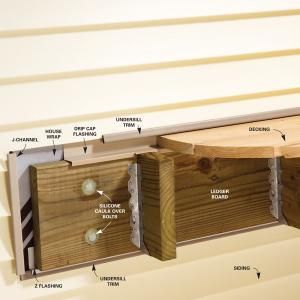How Is Flashig Attached Behind Siding

Keep water out of your home and running down the roof where it belongs with appropriate use of step flashing.
How is flashig attached behind siding. Pry the siding out near a nail then push the pry bar against the nail as you partially tap the siding back in. How to install step flashing under siding. The vertical flange of the flashing is to extend up behind the adjoining siding. Slip the back flashing under the siding at least 3 at the top and the sides.
This results in a 2 inch minimum head lap. Begin at either end of the wall and set the level middle section of the z flashing onto the top edge of the siding panel with the wider flange upward and against the wall framing. That should pop the nail head out far enough so you can pry it out. The type and location of the flashings will vary depending on the type of windows and doors.
For a wood window unit drip cap flashing can be installed over the trim piece often called brick molding that comes. Install the first length of z flashing. Start by making an outline on the siding where you want to position the ledger board. If you have vinyl or metal flanged windows for instance you can install drip cap flashing 4 the home depot over the window itself or over the top trim piece that you install.
Flush the end of the flashing length with the wall corner and secure the flashing to the framing with an 8d nail at each wall. Then slip flashing behind the siding covering the top edge of the ledger. Step flashing is used where a roof meets a. The recommended width of step flashings will vary depending on the agency entity being referenced.
Make the outline large enough to include space for the deck boards on top the ledger and any trim boards on the sides. You may need to pry out siding first. If the sidewall is stucco or solid wood like ours and you can t open it to get flashing behind it continue the step flashing to the peak of the roof then cover the step flashing with cap flashing.














































